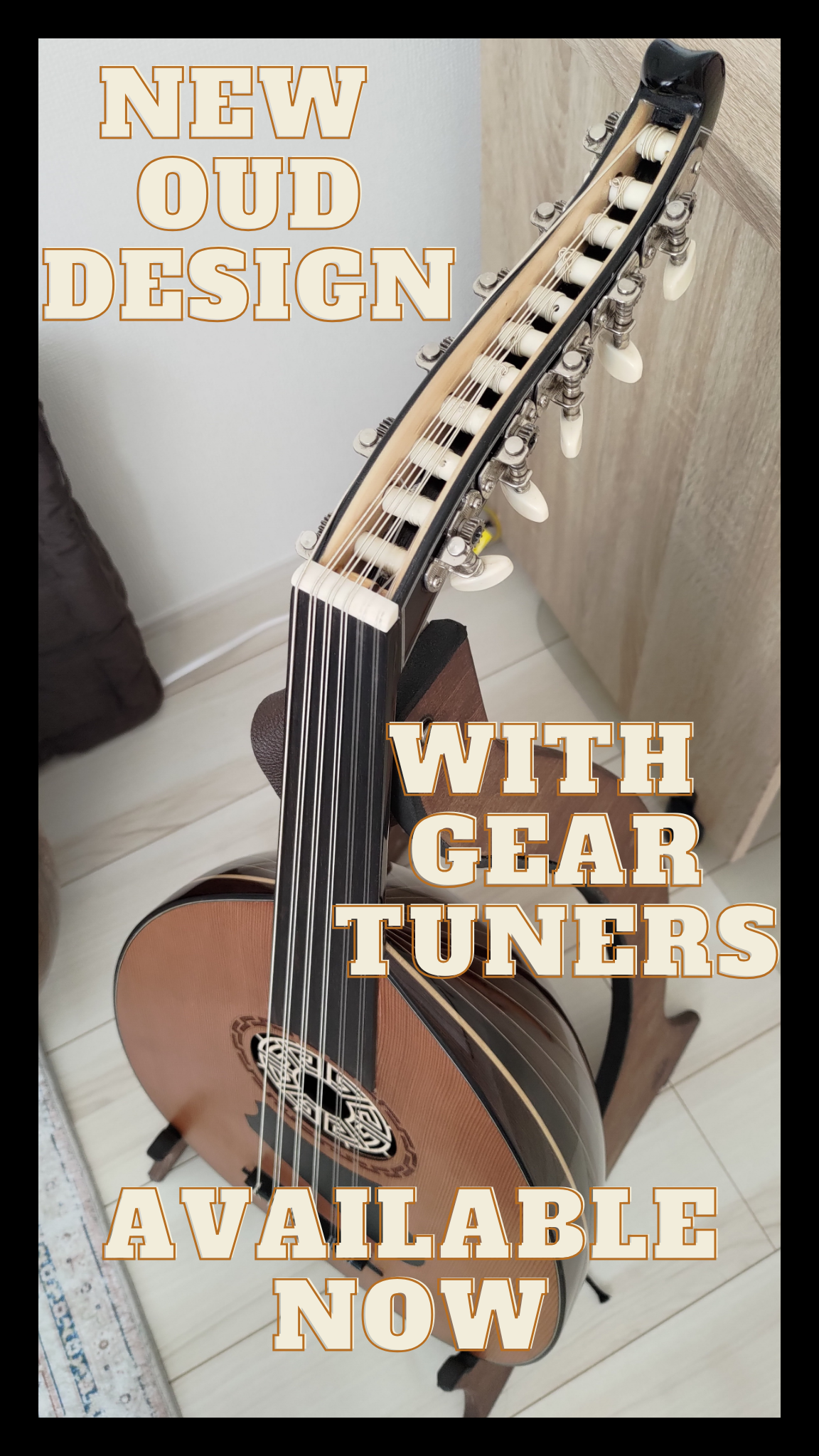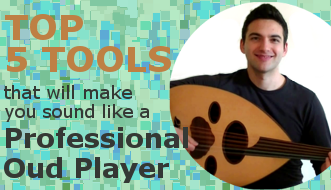For a beginner it is easier to tune your Oud with a digital tuner.
But what did the Oud players of old do?
They tuned their instruments by ear. This video is going to show you how to tune your Oud by ear.
After really learning Middle Eastern music, you will learn that the value of pitches or frequency is not as important in Middle Eastern music as it is in western music when it comes to tuning. In modern times, we have been trained to adhere to absolute pitch, or perfect pitch. And some individuals have this uncanny ability to tell you by name what pitch they are hearing. This is useful to some degree in this digital age particularly in Western music where Pianos and Guitars are tuned to equal temperament tuning. But this is not that important in Middle Eastern music. In Middle Eastern music, relative pitch is the most important skills to develop and use, because the music is modal, based on melody rather than harmony. Relative pitch is the ability to sing or know what note is being played after hearing another note. The easiest way to do this is to just sing any note on a Piano, and sing the major scale up and down after just hearing that first note. Anybody can do it. It’s a common vocal warm up. When you develop relative pitch, you can take any note and sing what is called a perfect fourth or fifth above that note, and even a perfect third. If you are really skilled, you might be able to replicate almost any note after hearing the first note.
So if you don’t have perfect pitch, don’t worry, it’s actually really useless when it comes to Middle Eastern Music. Perfect pitch is actually quite unnatural, and a byproduct of rigidity of equal tempered Piano tuning. But it would be a cool skill to have.
So in tuning your Oud, you will develop your relative pitch.
Step 1
Tune your high cc strings to C using a digital tuner.
(HA! you say… you still need to use a tuner to tune your Oud…)
Only if you want, but it’s good practice to keep your Oud tuned in a certain range.
Step 2
Tune your second gg strings to G using relative pitch. G is a perfect fourth below C. Use C that you already tuned and sing a descending Major scale from C to G with your voice to find the note, or you can cheat a bit and look at your tuner for help. But remember to fine tune with your ear. Listen for different sound wave oscillations. If the two pitches are consonant, then they are probably in tune. The more consonant the pitches are, the more in tune they are.
Step 3
Use G that you have tuned to find D using relative pitch.
Step 4
Use D that you have tuned to find A using relative pitch.
Step 5
Use high cc string to tune low bass string to C. These C notes are two octaves apart but should sound the same, meaning there should be no dissonant oscillations.
Step 6
Use relative pitch tune your 5th string to either G or F, whatever you use. If you are tuning the 5th string to G, then you use the second gg strings to tune the 5th course to a G one perfect octave below.
If you are tuning the 5th strings to F, then it is a bit tricky. You either use the low bass C string to find a perfect 4th above (a 4th note above C is F), or you need to be able to hear a perfect third below the A string you have already tuned. The easiest is to use the low C to tune to the F. In the end, you should find that the bottom C, F and A string make a major F chord and should all sound consonant when played together. This is a good way to double check that it is all in tune.
To finish up
After double checking all the relative pitches of the open strings on your Oud, your Oud should be in tune more or less. With time, this becomes easier and easier.
Developing your relative pitch is going to help you hearing different maqams, so it’s fine to start tuning your instrument even if you’re just a beginner. But always remember to use the right tuning and be careful with your Oud. When in doubt, use a digital tuner, but don’t rely on it.
Note: This is for Arabic/Persian Oud tuning: (low to high) C F/G A D gg cc






Where can I find instructions on ‘how to string’ an Arabic 12 string Oud?
Maybe this video will help? What specific instructions are you looking for?
https://www.oudforguitarists.com/how-to-change-oud-strings/
انا عربي وفهمان كل درس بتحبي ساعدك بشي ؟